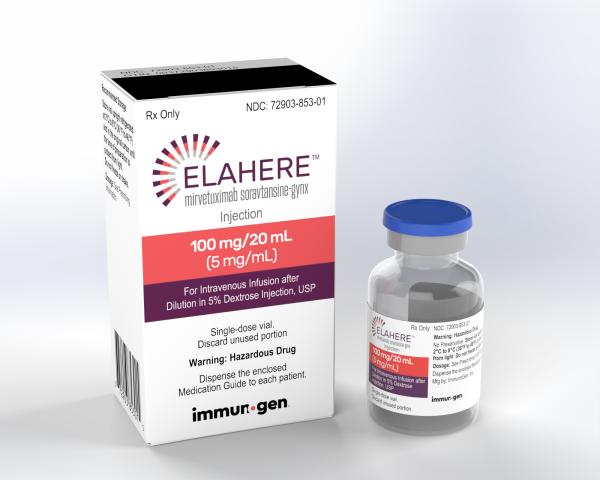Elahere Disease Interactions
There are 4 disease interactions with Elahere (mirvetuximab soravtansine).
Mirvetuximab soravtansine (applies to Elahere) hepatic impairment
Major Potential Hazard, Moderate plausibility. Applicable conditions: Liver Disease
The use of mirvetuximab soravtansine should be avoided in patients with moderate or severe hepatic impairment. No dose adjustment is recommended for patients with mild hepatic impairment.
Mirvetuximab soravtansine (applies to Elahere) peripheral neuropathy
Moderate Potential Hazard, Moderate plausibility.
Mirvetuximab soravtansine caused peripheral neuropathy in 36% of the patients in clinical trials. Monitor patients closely for signs and symptoms of neuropathy, such as paresthesia, tingling or burning sensation, neuropathic pain, muscle weakness, or dysesthesia. For patients experiencing new or worsening peripheral neuropathy, withhold dosage, dose reduce, or permanently discontinue treatment based on the severity of the symptoms.
Mirvetuximab soravtansine (applies to Elahere) renal impairment
Moderate Potential Hazard, Moderate plausibility. Applicable conditions: Renal Dysfunction
The effect of severe renal impairment (CrCl 15 to less than 30 mL/min) or end-stage renal disease on mirvetuximab soravtansine is unknown. Caution is advised if prescribing to these patients. No dosage adjustment is recommended for patients with mild to moderate renal impairment.
Mirvetuximab soravtansine (applies to Elahere) visual disturbances
Moderate Potential Hazard, Moderate plausibility. Applicable conditions: Visual Defect/Disturbance
Mirvetuximab soravtansine can cause severe ocular adverse reactions, including visual impairment, keratopathy (corneal disorders), dry eye, photophobia, eye pain, and uveitis. Patients should have a detailed ophthalmic exam including visual acuity and slit lamp exam prior to treatment initiation, and before every other cycle for the first 8 cycles, and then as clinically indicated. Refer patients to an eye care professional immediately for any new or worsening ocular signs and symptoms. Monitor closely for ocular toxicity and withhold, reduce, or permanently discontinue treatment based on severity and persistence of ocular adverse reactions.
Switch to professional interaction data
Elahere drug interactions
There are 151 drug interactions with Elahere (mirvetuximab soravtansine).
More about Elahere (mirvetuximab soravtansine)
- Elahere consumer information
- Check interactions
- Compare alternatives
- Pricing & coupons
- Reviews (10)
- Drug images
- Side effects
- Dosage information
- During pregnancy
- FDA approval history
- Drug class: miscellaneous antineoplastics
- Breastfeeding
- En español
Related treatment guides
Drug Interaction Classification
| Highly clinically significant. Avoid combinations; the risk of the interaction outweighs the benefit. | |
| Moderately clinically significant. Usually avoid combinations; use it only under special circumstances. | |
| Minimally clinically significant. Minimize risk; assess risk and consider an alternative drug, take steps to circumvent the interaction risk and/or institute a monitoring plan. | |
| No interaction information available. |
See also:
Further information
Always consult your healthcare provider to ensure the information displayed on this page applies to your personal circumstances.


